by Gabriella Radujko
on January 20th, 2012

Jean Arp used seashells and blood; Jean Dubuffet, butterfly wings and glue; Bruce Conner, nylon hosiery and nails. Joseph Montgomery uses nonesuch provocative materials in his assemblages, part of the show Velveteen, now on view at Laurel Gitlen, the polished, new gallery on the Lower East Side. Instead, he uses what one would find in the garage of the average do-it-yourselfer–canvas, clay, lacquer, oil, sheet metal, and plastic—weaving, painting and affixing them on panels averaging 12.5”x 10.5” x 3” deep. Less noteworthy than the use of found, masculine materials, is the skill with which the artist successfully unifies disparate textures using high value colors. His work solicits a calm and restrained response uncharacteristic of a medium which has been disturbing audiences for a century since the advent of the first modern collage by Picasso in 1912 and “God”, the first modern assemblage by Baroness Elsa von Freytag-Loringhoven and Morton Schamberg in 1918—a work which featured plumbing fittings. Continue Reading More »
Comments closed
by Carissa Pelleteri
on January 18th, 2012
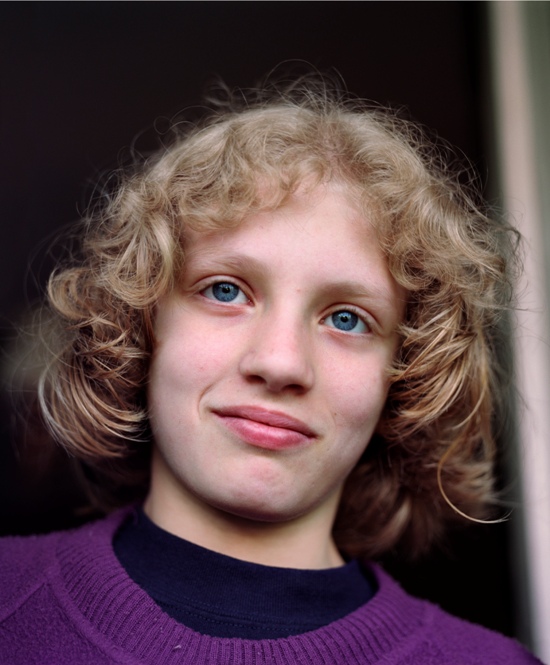
Anna Shteynshleyger, Masha, 2002. © Anna Shteynshleyger, Courtesy the artist.
Perspectives 2012, opening on January 20 at the International Center of Photography (NY), is the second installment of an exhibition series that focuses on innovative artists working in photography and video. These small group exhibitions highlight the individual ideas and achievements of an engaging and eclectic group of talented artists. The aim of the series is to stimulate conversations about contemporary art and to showcase outstanding artworks that might not otherwise come to wide attention.

Chang The Jiang Family. Left: Fuzhou, China, 2004; Right: New York City, 2008. © Chien-Chi Chang/Magnum Photos, Courtesy of Chien-Chi Chang/Magnum Photos and Chi-Wen Gallery, Taipei
Perspectives 2012 includes works by three artists—Chien-Chi Chang, Greg Girard, and Anna Shteynshleyger —who explore what happens when tight-knit cultural communities are transplanted to unfamiliar geographic locales. Each artist is represented by a group of prints selected from a much larger body of work. Continue Reading More »
Comments closed
by Cielo Lutino
on January 16th, 2012
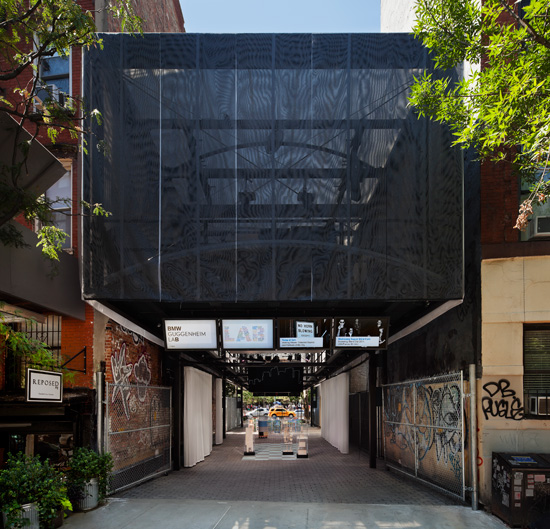
BMW Guggenheim Lab exterior view from East 1st Street, NYC (Photo: Paul Warchol)
Last winter I stood on a cold subway platform and told Y about my new crush: David van der Leer. “Who is he?” she asked, distracted. She was peering down the dark tunnel, hoping to see train lights headed our way. It was one of those very snowy late nights in New York, and we had fallen victim to the slow timetable of weekend trains. I don’t know, I said. Some curator at the Guggenheim. Y turned her gaze on me. “You don’t even know who this dude is?” she asked. I shrugged and told her I liked what he’d been curating. She shook her head. Who falls for someone’s curation? Continue Reading More »
Comments closed
by Gabriella Radujko
on January 4th, 2012
-
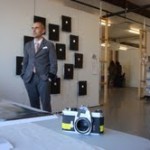
-
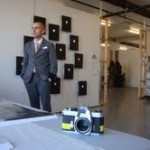
-
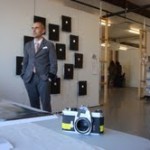
-
photo by Gabriella Radujko
Whereas Man Ray and László Moholy-Nagy famously eliminated the camera altogether to make photograms by capturing light directly, Brad Farwell retains the camera, but not the lens for his ongoing series
Die Transfer Process. The artist was one of twenty artists-in-residence showing at the Lower Manhattan Cultural Council’s Final Open Studios in Building 110 on Governors Island on December 9, 2011. The wall installation features about a dozen unique, 35mm transparencies shown with Polaroid slide mounts, atop custom light boxes staggered on a white wall covering approximately 6’ x 8’. White extension cords were in plain sight. Farwell gives viewers the physical object, but the images are not much more than the color field. Irresolvable in their lack of focus and reminiscent of the painterly effects associated with Helen Frankenthaler, the artist offers, “what is being photographed is not the subject of photography”.
Continue Reading More »
Comments closed








 RSS
RSS
